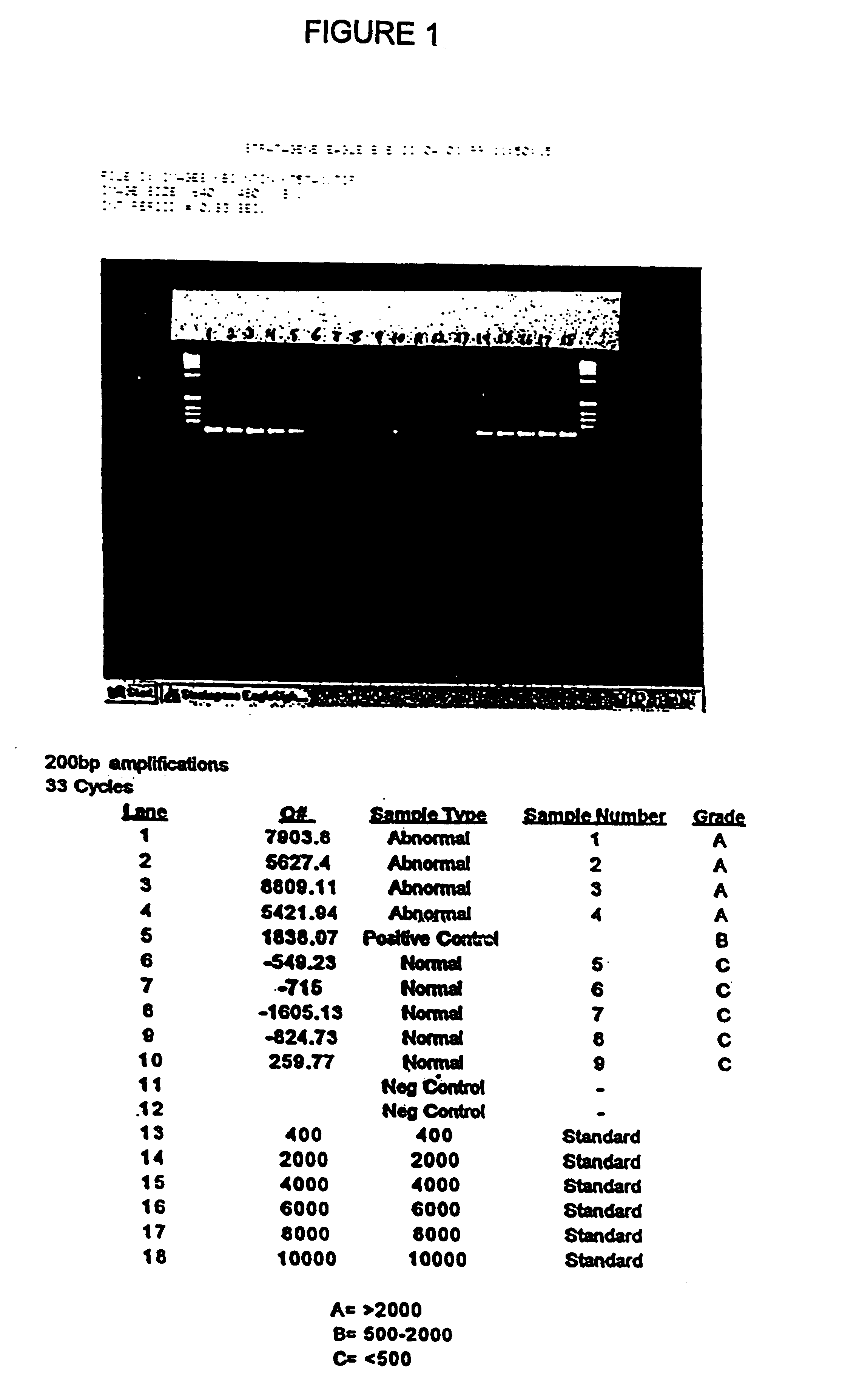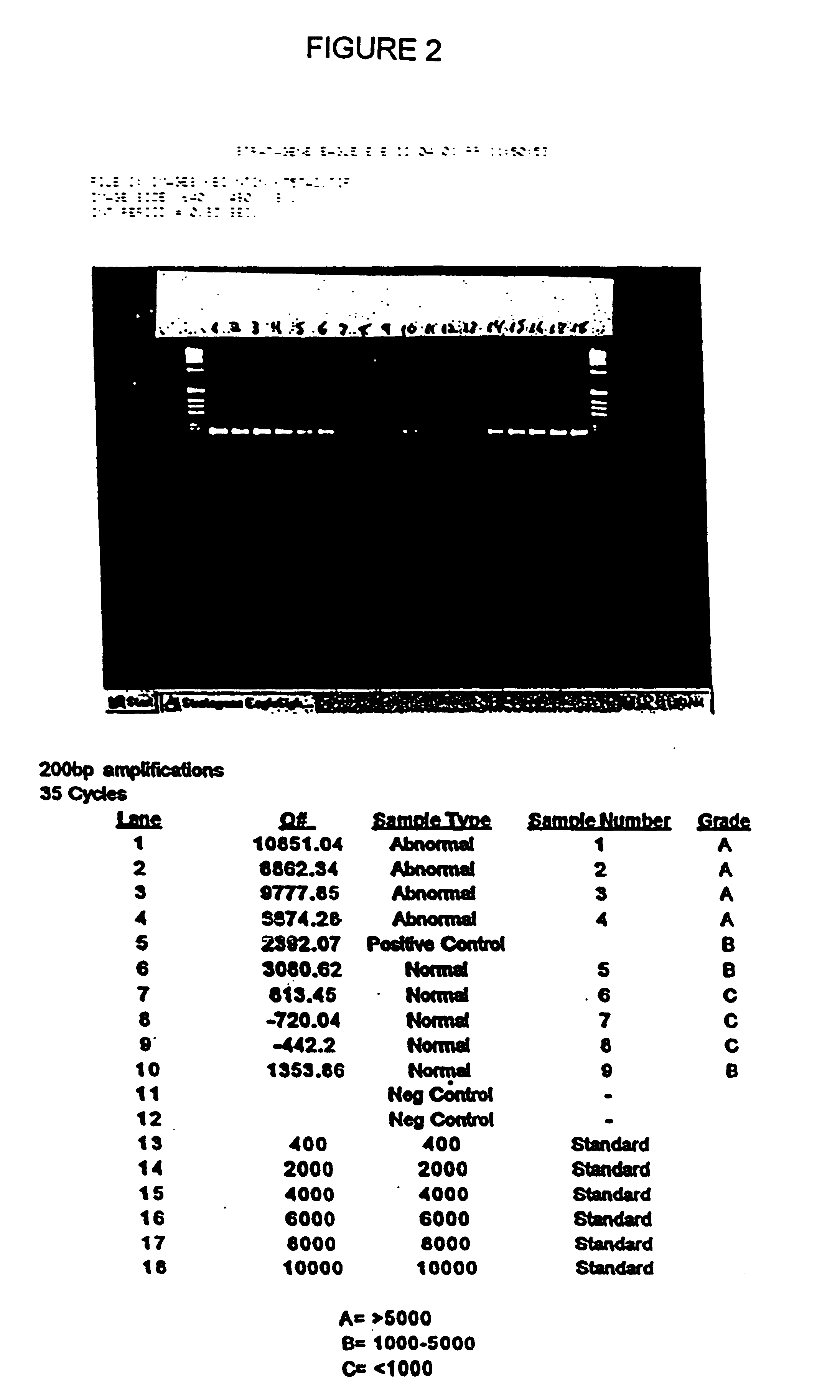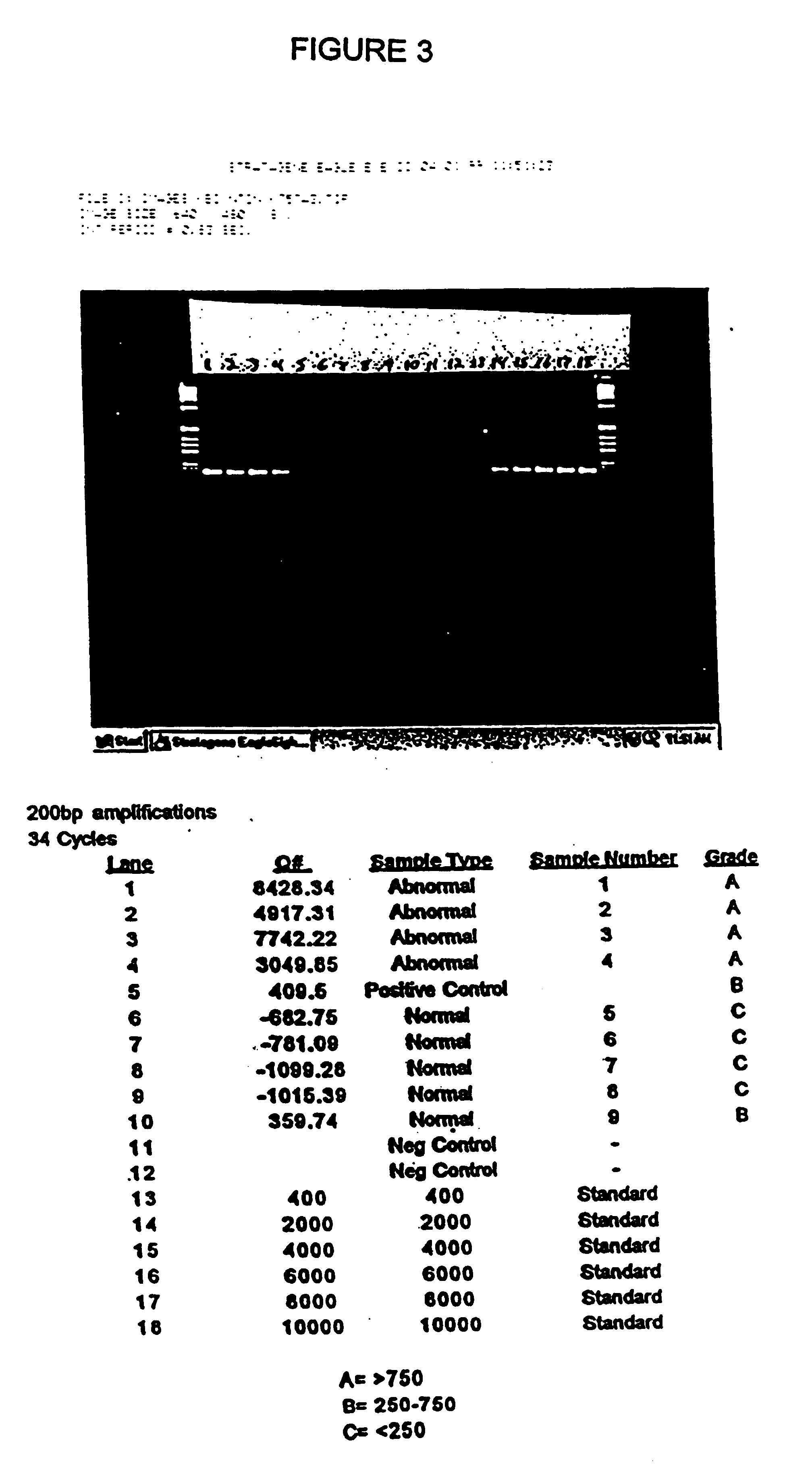Methods for disease detection
a disease detection and method technology, applied in the field of disease detection, can solve the problems proteins, other cellular components in healthy individuals, and relatively large cellular components, and achieve the effect of reducing the integrity (intactness) of nucleic acids
- Summary
- Abstract
- Description
- Claims
- Application Information
AI Technical Summary
Benefits of technology
Problems solved by technology
Method used
Image
Examples
example 1
[0065]Stool samples were collected from 9 patients who presented with symptoms or a medical history that indicated that a colonoscopy should be performed. Each stool sample was frozen. Immediately after providing a stool sample, each patient was given a colonoscopy in order to determine the patient's disease status. Based upon the colonoscopy results, and subsequent histological analysis of biopsy samples taken during colonoscopy, individuals were placed into one of two groups: normal or abnormal. The abnormal group consisted of patients with cancer or with an adenoma of at least 1 cm in diameter. Based upon these results, 4 of the 9 patients were placed into the abnormal group.
[0066]The samples were screened by hybrid capturing human DNA, and determining the amount of amplifiable DNA having at least 200 base pairs. Each frozen stool specimen, weighing from 7-33 grams, was thawed and homogenized in 500 mM Tris, 16 mM EDTA, and 10 mM NaCl, pH 9.0 at a volume, to mass ratio of 3:1. Sa...
example 2
[0073]An experiment was conducted that was essentially identical to the one described above in Example 1, but forward and reverse primers were placed such that fragments of about 1.8 Kb and above were amplified.
[0074]DNA was prepared as described above. Forward and reverse primers were spaced so as to hybridize approximately 1.8 Kb apart on three different loci (Kras, exon 1, APC, exon 15, and p53 exon 5). Thirty-three rounds of amplification were performed, and the resulting DNA was placed on a 3% agarose gel. The results are shown in FIGS. 8-10. As shown in the Figures (which show results from three separate experiments to amplify and detect “long” product), samples from individuals having cancer or precancer produced large amounts of high-molecular weight (in this case 1.8 Kb and above) DNA; whereas samples from patients who did not have cancer or precancer produced no DNA in the range of about 1.8 Kb and higher. Thus, the presence of high-molecular weight DNA was indicative of t...
example 3
[0075]An experiment was conducted to determine the molecular weight profile of DNA from samples collected and prepared as part of a blind study on 30 patients who presented at the Mayo Clinic with suspected gastrointestinal disorders. Stool samples were obtained, and DNA was isolated as described above.
[0076]Prior to amplification, DNA was isolated from the samples by hybrid capture. Biotynilated probes against portions of the BRCA1, BRCA2, p53, APC genes were used.
[0077]The BRCA1probe was 5′GATTCTGMGAACCMCTTTGTCCTTMCTAGCTC173′ (SEQ ID NO: 8).
[0078]The BRCA2 probe was 5′CTAAGTTTGAATCCATGCTTGCTCTTCTTGATTATT3′ (SEQ ID NO 9).
[0079]The APC1 probe was 5′CAGATAGCCCTGGACAAACCATGCCACCAAGCAGAAG3′ (SEQ ID NO 10).
[0080]The p53 probe, hybridizing to a portion of exon 5, was 5′TACTCCCCTGCCCTCAACAAGATGTTTTGCCAACTGG3′ (SEQ ID NO:4).
[0081]The APC2 probe was 5′GAAGTTCCTGGATTTTCTGTTGCTGGATGGTAGTTGC3′ (SEQ ID NO 11).
[0082]A 300 μl aliquot of sample was placed in 300 μl of 6 M guanidine isothiocyanate ...
PUM
| Property | Measurement | Unit |
|---|---|---|
| diameter | aaaaa | aaaaa |
| mass ratio | aaaaa | aaaaa |
| length | aaaaa | aaaaa |
Abstract
Description
Claims
Application Information
 Login to View More
Login to View More - R&D
- Intellectual Property
- Life Sciences
- Materials
- Tech Scout
- Unparalleled Data Quality
- Higher Quality Content
- 60% Fewer Hallucinations
Browse by: Latest US Patents, China's latest patents, Technical Efficacy Thesaurus, Application Domain, Technology Topic, Popular Technical Reports.
© 2025 PatSnap. All rights reserved.Legal|Privacy policy|Modern Slavery Act Transparency Statement|Sitemap|About US| Contact US: help@patsnap.com



